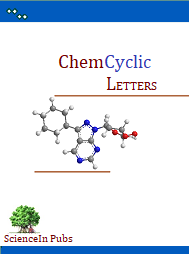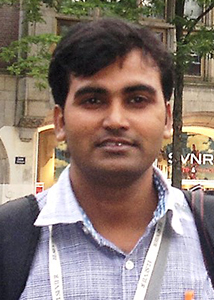Information for Authors
The Authors need to submit a single manuscript file containing all the details as described below (do not submit text, figure/images, tables in separate files). Additional the supplementary data files should be submitted as a separate file. A cover letter should be provided during the submission (in message to editor box).
Cover letter
Authors should supply a cover letter indicating rational of their work. Cover letter should also have details of at least three reviewers (with email). Cover letter should be provided on the first step of submission in “Comments for Editor’ box.
Graphical Abstract
Authors need to submit a graphical abstract highlighting the contents of manuscript. The guidelines for graphical abstract preparation and submission are available on this link. The graphical abstract should be submitted in image format separately and also be included in the main manuscript file.
Manuscript
Manuscript should include Title, Author (s), Affiliation (complete name of institutions), Abstract, 5 Keywords, (other sections like Introduction, Results and discussion, conclusion, experimental procedures in the main body text of manuscript could be used for full paper article), acknowledgment and references in the listed order. Short communications need not to be arranged in different sections. References should be formatted as shown for articles,1 theses,2 books,3,4 and patents,5
1. R. Ping, M. Laura, P.S. Mario. Title of the journal article should be included here. Int. Lett.Org. Chem. 1996, 61, 4439–4449.
2. B.K. Sharma. Ph.D. Dissertation, Thesis Title, Cornell University, 1995.
3. R. Hussain, D. Shinkoi. Title of book like Synthesis and application of ionic liquid, John Wiley & Sons: New York, 2010.
4. R.S. Buchanod, D.K. Reddy. In Selective Organic Transformations; T.R. Thyagarajan, Ed.; Integrated science: New York, 2002; Vol. 2, pp 1–95.
5. G.L. Loyale, U.S. Patent 5 934 456, 1998; Chem. Abstr. 1998, 65, 2870.
Citation Manager style files: Authors are highly encouraged to use the citation manager programs for citing and formatting the references. Authors may use free Mendelay, Zotero, Paper 2 or Endnote program. If you are using any of these citation manager program for Bibliography (References and Notes), then you can download citation style file for journal (common for ISP journals):
Mendelay, Zotero, Paper 2 style file: ISP Journals CSL style file
Endnote style file: ISP Journals Endnote style file Or ChemBiolLett style file (click and download from google drive … and copy the file to Endnote style folder or open in EndNote).
click to download and then open in respective program (the user can see the respective program user guide on how to use the style file).
Submission
Authors need to submit all manuscripts through journal website. Register by following link ‘Register’ above (make sure to mark checked the options Author and reviewer while registering for journal). On login, you will find ‘new submission’ link in your panel page.
For review purpose, author can submit the manuscript as outlined above. However, Authors are advised to prepare their manuscript according to journal article template (provided below) as it progress towards acceptance. On acceptance of manuscript, authors must need to supply their manuscript in Article template (if they have not already submitted in template). If you face difficulty in preparing manuscript according to template, then you can forward your manuscript (place all figures with caption in the end of file) to Copyeditor/Support department ( pubs@thesciencein.org )
Templates
On acceptance of manuscript, Authors are required to submit revised manuscript in journal articles template (If authors wish, they are free to submit their manuscript in journal article template while submitting first time).
ChemCyclLett_Word2007-2010_template2021
Or ChemCyclLett_word2010_template – 2 click to download from google drive
(authors can use any one of these templates for preparation of their manuscript)
Instructions for conversion of manuscript in journal article template is provided on https://pubs.thesciencein.org/manuscript-conversion-in-journal-article-template-instructions/ (please check the video on the link for correctly formatting your manuscript.
download the template (as per the MS Word version that you have on your computer), double click the file to open and then prepare your article and save it with your own name.
Login and submit the manuscript online (submission by email are not accepted). Only online submissions are accepted now.
Authors are advised to contact Support, CCL (email: pubs @ thesciencein.org ) if there is any problem in registration or submission.
Declaration of Conflict of Interest
Authors should mention any conflict of interest in the work submissted to ChemCyclic Letters. The statement about conflict of interest may be mentioned in the ‘Letter to editor’ or placed in the manuscript after acknowledgement section.
Ethical Uses Declaration:
If the manuscript report the experimentation on animals (including clinical trials on human beings), then declaration about ethical way handling of animals and about keeping the complete privacy of human identity (in case of clinical trials) must be mentioned in the manuscript.
Helsinki Declaration (contents from NIH-NLM): When reporting experiments on human subjects, authors should indicate whether the procedures followed were in accordance with the ethical standards of the responsible committee on human experimentation (institutional and national) and with the Helsinki Declaration of 1975, as revised in 2000 (5). If doubt exists whether the research was conducted in accordance with the Helsinki Declaration, the authors must explain the rationale for their approach, and demonstrate that the institutional review body explicitly approved the doubtful aspects of the study. When reporting experiments on animals, authors should be asked to indicate whether the institutional and national guide for the care and use of laboratory animals was followed.
Submission:
Submit manuscript on journal editorial processing site at
https://pubs.thesciencein.org/journal/index.php/ccl









